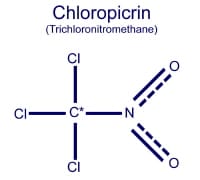I've been trying to find some time to just finish a few important posts I have been postponing, some of them so important that I cannot neglect an inch of the quality level I want them to have. However, I must first complete the previous one regarding the culturing of strawberries in the south of Spain. Firstly, I don't wish to go on and on about how seriously damaged a Natural Reserve and its wildlife are being affected. People these days enjoy of some good in-depth education that does not need stressing constantly how important a role is played by both ecological balance and equilibrium of the ecosystem. Needless to say that future generations are going to suffer, just the same way we've been suffering for we are the future generation of the previous ones. Now, if environmental protection and respect for the different types of life is not that important for some parts of our societies, then let's focus on what can kill us slowly and make us really agonise in the process.
Remember when the last post said chloropicrin and bromomethane are used for means of erasing the microfauna so more space is made available for the strawberries? Well, let's very briefly know some facts then:
"Chloropicrin is a soil fumigant used for its broad biocidal and fungicidal properties, primarily in high-value crops such as strawberries, peppers, onions, tobacco, flowers, tomatoes, and nursery crops. John Stenhouse, a Scottish chemist and inventor, synthesized chloropicrin in 1848. Because chloropicrin is toxic by all routes of entry, it has the potential for widespread destruction as a chemical warfare agent." [1]
"Chloropicrin is an irritant to all body surfaces... This liquid decomposes in the environment... Chloropicrin photodegrades, with a half-life of 20 days" [1]
Detection
The odor is a distinctive warning property of this liquid compound.
I believe these informations give you a pretty good idea of how toxic chloropicrin can be, but if by any chance you are still suspicious take a look at a garage experiment with choloripcrin shared on youtube and make up your mind the way you see fit. Embedding has been disable by request from the video creator however you can access directly by clicking here!
As for Bromomethane:
"Bromomethane is a manufactured chemical. It also occurs naturally in small amounts in the ocean where it is formed, probably by algae and kelp. It is a colorless, nonflammable gas with no distinct smell. Other names for bromomethane are methyl bromide, mono-bromomethane, and methyl fume. Trade names include Embafume and Terabol. Bromomethane is used to kill a variety of pests including rats, insects, and fungi. It is also used to make other chemicals or as a solvent to get oil out of nuts, seeds, and wool."[2]
Exposure to this chemical can affect your cardiovascular organs, your skin, your digestive system, and even cause neurological damage; although carcinogenic effects were never proven [2].
What happens to bromomethane when it enters the environment?
o It moves very quickly into the air when released to the
environment or when present in soil or water.
o It breaks down slowly in air over several years.
o It breaks down quickly in soil over a few days.
o Small amounts can move from the soil into the
groundwater.
o It breaks down in groundwater over a period of several
months.
o It does not build up in plants or animals.
Source: [3]
If nothing else made you think twice, focus solely on the results presented by the table above and imagine how all those animals are affected by drinking water contaminated with two very strong pollutants.
[1] Medscape reference, Chloropicrin poisoning, http://emedicine.medscape.com/article/832637-overview, last visited on the 20th of November, 2011, last updated on January 2011.
[2] Agency for toxic substances and disease registry, Bromomethane, , last visited on the 20th of November 2011, last update on September 1995.
[3] Agency for toxic substances and disease registry, Bromomethane CAS# 74-83-9, http://www.atsdr.cdc.gov/toxfaqs/tfacts27.pdf, last visited on the 20th of November 2011, last updated on september 1995.



No comments:
Post a Comment